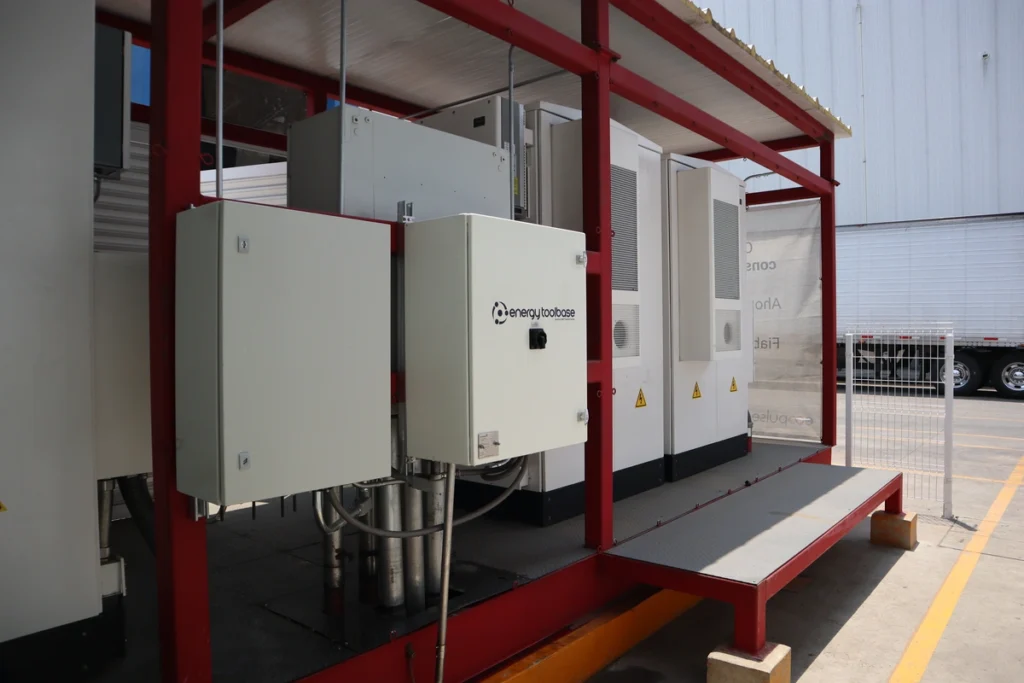Globally, businesses and organizations are searching for the most cost-effective and energy-efficient methods to maintain their commercial properties. Enter battery management and energy management: two approaches leveraged to achieve greener operations, reduce utility costs, and cut energy consumption – both intertwined yet serving different functions and essential to the core functionality of an ESS to ensure maximum savings. To achieve these reductions and savings, developers and end-customers need assets that are working in conjunction with one another seamlessly.
What is the Primary Function of an Energy Management System
The energy management system (EMS) handles the control and coordination of the energy storage system’s (ESS) dispatch activity. The EMS can command the Power Conditioning System (PCS) and/or the Battery Management System (BMS) while reading data from the systems. The EMS is responsible for deciding when and how to dispatch, generally driven by an economic value stream, such as demand-charge management, time-of-use arbitrage, or solar self-consumption as well as determining if the battery should charge from the grid or the PV resource. EMS software attempts to optimize the performance of the ESS by weighing long-term cycling and capacity degradation with the asset’s return on investment. This involves knowing the battery management system (BMS) and PCS limitations and recognizing when the energy storage system can be used most effectively.
An EMS combined with an ESS will function as the controller dispatching the energy storage system(s) and will manage the charge-discharge cycles of the energy storage system. However, the EMS can provide remote monitoring capabilities to a BMS allowing manufacturers and owners to retrieve data about how the system has been operating. Additionally, the EMS can use the data to make informed decisions to improve the battery’s performance.
An EMS receives performance data in real-time from the BMS (with data including state of health, discharging/charging rates, and state of charge). The EMS uses this data to improve battery performance and minimize energy costs and an EMS can prioritize energy consumption from the battery during high-demand periods and when energy prices are higher to minimize the building’s dependence on the grid, lower costs, and maximize ROI.
What is the Primary Function of a Battery Management System
The BMS is a relatively low-level input/output (I/O) interface that serves as an operating system for the battery. Conceptually, the BMS is analogous to a car’s steering wheel, transmission lever, and floor pedals. Every vehicle has these rudimentary operating system components, but this I/O interface alone cannot pilot a vehicle down the road.
The BMS is a core component of any battery-based ESS and performs several critical functions. The BMS does not provide the same functionalities as an EMS but it’s primary job is to protect the battery from damage in a wide range of operating conditions. It does so by ensuring that the battery cells operate within their prescribed operating windows for the state of charge, voltage, current, and temperature. All this information is collected and used for proper maintenance and runtime estimates of the battery asset. This is especially important for high-power density lithium-ion batteries to prevent fires or explosions caused by thermal runaway and combustion. Generally, each manufacturer designs the BMS to work with specific battery cells to ensure optimal performance. Overall, the BMS primarily ensures the safety of the battery, as lithium-ion batteries (commonplace in energy storage systems) can easily overcharge/discharge and overheat, causing permanent damage to the unit and potentially resulting in fires.
Maximize Energy Storage with Acumen EMS™ & ETB Monitor
Energy Toolbase can provide developers with an energy management solution, that provides advanced control capabilities and a user interface with robust monitoring capabilities.Acumen EMS™ andETB Monitor work together to capture the maximum available value for your customer and an in-depth, real-time look at the system’s performance, faults, and alerts, and diagnose and resolve them in a timely fashion.
You can read more about how an EMS and BMS work to achieve savings for real-world commercial energy storage projects in ourMonetize Your Energy Storage Asset whitepaper.
Acumen EMS is currently deployed and contracted on 100+ sites across North, South, and Central America.Set up a call with our team to learn more about how Acumen EMS for your storage projects or would like to have an energy storage consultation.



